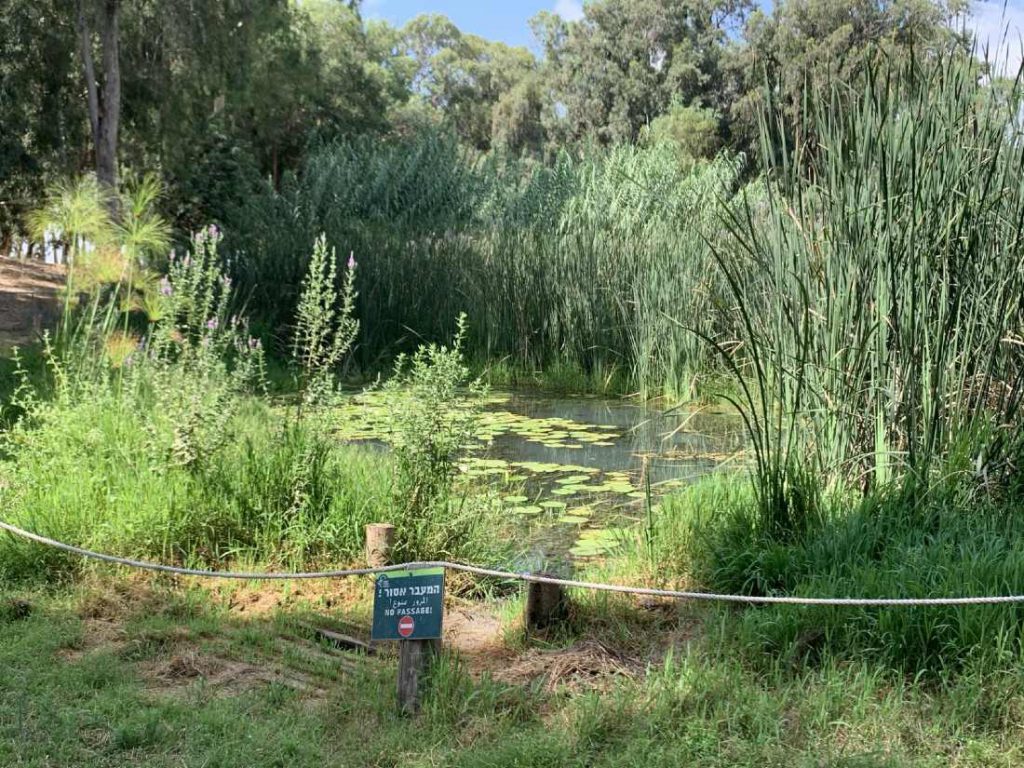Rehabilitating the river
Until the mid 1950’s, clean water flowed in the Yarkon, suitable for fishing, swimming and recreation.
Spring water, on which a sustainable aquatic ecosystem was based, providing services such as fishing, recreation and water for agriculture. Following the accelerated development that took place around the river and its drainage basin, and after the Yarkon’s sources were pumped to the Negev from 1955 onwards, great changes took place in the river’s natural ecological systems. Not only was there now less water flowing in the Yarkon, but different parts became filled with sewage and domestic waste, industrial waste and agricultural fertilizers. These changes caused a collapse of the aquatic ecosystem, stopping its possibility to provide services for the wellbeing of people and the river transformed from a resource to a nuisance.

Lebanon Pool at the Mekorot Hayarkon National Park site
The Yarkon River Authority was founded in 1990, and its role per its founding decree (1988) is “The prevention of the river’s pollution, its rehabilitation and the regulation of leisure and recreation activities”. As part of the programs for rehabilitating the Yarkon led by the Yarkon River Authority, the Nature and Parks Authority, the Botanical Gardens, the Institute for Nature Conservation Research at Tel Aviv University and the Society for the Protection of Nature, a remapping was made of the parts of the river that were mapped before, in order to try and track the changes that occured in the Yarkon’s vegetation along the years since the “Yarkon-Negev” project began.
It turns out that extreme changes occured in the composition of the species growing in the body of water. Of seven species of plants that once grew in the Eastern part- Blue Water Lily, Shore Rush (Scirpus), Ludwigia Stolonifera, Holly-leaved Naiad, Paper Reed, London Pondweed and Yellow Water Lily- only the last two species remained. The results of the mapping clearly showed that the variety of plant life is much larger in the clean parts of the river in comparison to the polluted parts, with even pollution that is only seasonal bearing a crucial impact on the diversity of species.
The Yarkon River Authority along with the partnering bodies promoted the government decision dubbed “Yarkon Redemption”, which designated the allotment of clean water (spring water) directly to the Yarkon River, in order to advance the rehabilitation of the river’s ecosystem. Today only about 5% of the Yarkon’s historical natural flow is streamed through the river, about 1,800 cubic meters/hour in comparison to 25,000 cubic meters/hour originally, and about 1,500 cubic meters/hour of reclaimed water.
As part of the plan for the Yarkon’s rehabilitation, projects were conducted to return local species which had become extinct in the Yarkon and were saved in “shelter gardens”, such as the Blue Water Linly and the Yarkon Bream fish, which were successfully returned to their original habitat. The Nature and Parks Authority along with the Yarkon River Authority have also been monitoring the population of softshell turtles in the Yarkon, and are acting to create an infrastructure along the river in which this special and rare breed can live and thrive. There have also been a small number of sightings of swamp cats in the Yarkon area in the last 30 years. The swamp cat is an indicator, as it is the top predator of the area, therefore its presence signifies a functioning ecosystem in the Yarkon River.
The Yarkon River Authority
Adress: Kiryat Atidim Building B7, 2rd floor
Mailing address: P.O. 58292
Phone: 03-5460233
Email: [email protected]